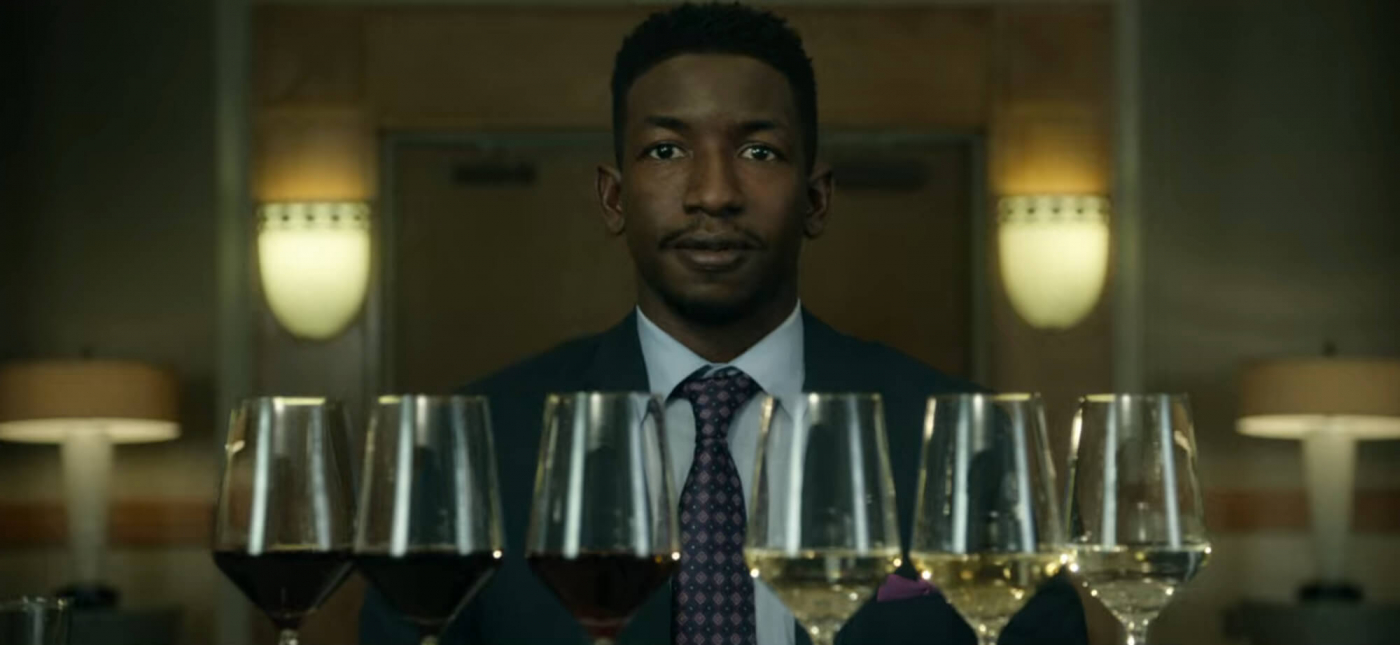
Effervesce sense | Karen Krizanovich goes to school
Jimmy Smith of the West London Wine School teaches our editor-at-large all about length. And some other things

Jimmy Smith of the West London Wine School teaches our editor-at-large all about length. And some other things

“Is it medium, medium plus or medium minus?” If it hadn’t been for the movie Uncorked, I wouldn’t know.
There are two kinds of champagne drinkers: me and those who know a lot more than me. From Uncorked, a lovely family tale of a man (played by Mamoudou Athie, above) who loves wine, I learned the inside story of the WSETs – Wine and Spirit Education Trust qualifications. These are a series of evaluations on each part of the wine experience: not just tasting, smelling and looking at the stuff but also judging the aftertaste and such. Friends who have taken their WSETs (and diplomas, and/or gone on to the big Master of Wine qualification) know how much fun they are but also how thorough. The knowledge involved is summed up in one quote from Uncorked: “This is a new world wine.” To ace these exams, you have to know how old the world is where your wine comes from. I mean, isn’t that humanly impossible?
Apparently not. As I am interested only in sparkling wines and champagne, WSETs aren’t tailored to me. I get education where I can. This is where Jimmy Smith, West London Wine School founder and Head Educator, comes in. You too can take a tasting with this man, who has boundless puppy-like energy and a terrier’s focus. Dogged. No wonder Smith was also named Drinks Business Man of the Year in 2019 and taught over 6,000 students. You get the idea.
I have marvelled and enthused at many wines but this one sparks the imagination
As with the best wine educators, Jimmy takes student mistakes in his stride and keeps the good humour flowing. Good humour is important in wine classes because otherwise I would cry. This is where I find out that other people know scientific terminology that I can’t even fit into an intellectual framework. After a billion years of studying philosophy, I know that jargon is useful only when needed and boring when not. So, of course, I get the “length” of one wine wrong. Length means, sort of, aftertaste. Or maybe it’s afterbirth. It’s after-something. I say it’s medium but it’s actually medium plus. I feel wretched and withdrawn. “Learning is all through trial and error,” Smith says very cheerily. Yeah, easy for you to say, Mr Wine Master. Having done the sparkling half of an WSET Level 3 with him, all I can say is, “Damn, these drunk tests are hard.”

Jimmy Smith
There are upsides to COVID-19. In days of yore (February) I’d have to elbow my way through bearded dudes clotted around the tasting tables, yammering away like hobbyists. Now you can learn to taste wine virtually over Zoom, which lets you savour and take your time. Unfortunately, I don’t spit during a virtual tasting and I should. If you don’t spit, everything tastes weird afterward. I am trying to keep this in mind when the Gratiot-Pillière champagnes (yes, plural) arrive at the door for the virtual tastings. This was not a box of champagne but a box of adventure. Inside was one bottle each of Gratiot-Pillière Extra Brut Tradition NV and Gratiot-Pillière Champagne Blanc de Blancs 2012 along with a Gratiot-Pillière Brut Tradition NV (half bottle) and Gratiot-Pillière Brut Rose NV.
Like many champagne makers, the Gratiot-Pillière family has been in the wine business for a long time – since 1657. Now in the hands of the 11th generation, Olivier and Sébastien, they have vineyards which cover 18 hectares throughout Charly-sur-Marne, Saulchery, Bonneil and Azy-sur-Marne. Lively and fun, Jimmy Smith joined Christelle Gratiot as she talked us through the process of using a cooperative, the terroir and how visitors are encouraged to go out to the vineyard and help.

Gratiot-Pillière Extra Brut Tradition NV
I took a few sips and wanted to help out there and then. I know I’m always extolling the virtues of what I’m tasting, but that’s because I am perpetually blown away by the champagnes we don’t hear of. There are so many to taste that are sensational. Their only flaws? Distribution, maybe. Marketing, maybe. Or maybe they like being sought after?
Gratiot-Pillière made me realise I know absolutely nothing about the world of champagne. I had never heard of it nor seen it before. It’s not in my bible, Tyson Stelzer’s Guide To Champagne. The Extra Brut Tradition – the house champagne of Streatham Wine, which supplied the tasting cases – is 12g/l dosage, which sounds very high. Yet it drinks very dry and is an easy quaff. It doesn’t demand you sit up and take notice. It’s happy to be biscuity and minerally while you enjoy it, your food and your company. It’s a sharing kind of bottle. But… the Gratiot-Pillière Blanc de Blancs 2012 is a bottle of dreams. This one sings with complex, changing, succulent peach, apricot and gorgeous dryness on the finish. There’s grapefruit followed by subtle lemony/biscuit. As it opened, I loved it more and more, to the point where I had to find out if it was available by the case.
While I don’t have the WSET skillz to impart to you the details of its afterbirth, I mean aftertaste, I mean length, Gratiot-Pillière Blanc de Blancs 2012 is a bottle built for celebration, and one for which I’d happy toil in a field. Seek the label. Buy a bottle. Look at it in the glass, smell it, take a sip. I have marvelled and enthused at many wines but this one sparks the imagination. This is what is possible with champagnes from less well-known vineyards. Taste what Gratiot-Pillière has wrought and marvel. C